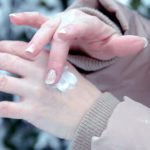Tis’ the season where people deck their halls with lights and wreaths, brave the elements to go “walking in a winter wonderland” and participate in winter sports after mother nature “lets it snow.” Although it may be “the most wonderful time of the year,” it can also be one of the most dangerous for house fires, frostbite and hypothermia.
The UPMC Mercy Trauma and Burn Center has some helpful tips to avoid any holiday havoc this year:
House Fires
According to the National Fire Prevention Association (NFPA), between 2013-2017, U.S. fire departments responded to an average of 160 home fires that started with Christmas trees annually. These fires caused an average of three deaths, 15 injuries, and $10 million in direct property damage each year.
“Each year throughout the holiday season from Thanksgiving to New Year’s we see a significant rise in burn related injuries,” said Jenny Ziembicki, director, UPMC Mercy Burn Center. “Educating ourselves about fire safety can help us prevent injuries so that we can enjoy traditional holiday activities such as cooking large meals, lighting fires and decorating our trees.”
More than half of holiday season fires stem from cooking accidents. Keep a 3-foot zone around stoves and ovens and keep towels, wooden utensils and potholders away from stovetops. When serving meals, be especially careful with tablecloths; kids and pets can pull on the cloth, bringing down hot food and causing a splash burn. If you choose to deep-fry a turkey for your holiday meal, the fryer should be outdoors and at a safe distance from buildings. Never leave the fryer unattended.
According to the NFPA, home candle fires are common on Christmas Eve, Christmas Day and New Year’s Day. Avoid using candles on meal tables, keep them away from children and pets and extinguish them before leaving the room. Make sure any decorative candles are held in sturdy holders or candlesticks.
Never use real candles on a Christmas tree— it is extremely dangerous due to the flammable nature of both real and synthetic trees. When selecting where to place the Christmas tree, avoid heat sources, such as radiators or fireplaces. If possible, place it near a smoke detector and be sure to use flame-resistant ornaments. Aluminum and metallic trees should not be decorated with lights as they can conduct electricity and cause electrocution.
Always inspect holiday lights for damage or frayed wires before use. Replace even slightly damaged lights and always check indoor and outdoor wires, bulbs, electrical plugs and sockets before using them. Do not overload electrical outlets or extension cords or run electrical cords under rugs or carpets as cords can fray and cause a fire. Always turn off holiday lights when leaving the house or going to bed.
If you have a fireplace, keep the flue clean and clear before use. Use a screen to keep embers from escaping and do not burn wrapping paper or Christmas trees in the fireplace after festivities resolve. These materials can cause fires to grow quickly and it is difficult to contain them.
The UPMC Mercy Trauma and Burn Center recommends checking and updating home smoke detectors and being especially careful with home space heaters during the winter season. Check smoke alarms and remember that batteries need to be replaced every 12 months—take note of the dates as a reminder. Make sure that smoke alarms are installed on every level of the home, including the basement and inside each bedroom. Mount the alarms high on walls or on the ceiling and do not install smoke alarms near windows, doors, or anywhere cold winter drafts could interfere with function.
Frostbite
Spending time outside building snowmen and sledding is fun, but everyone is susceptible to frostbite, especially children. Prevention is the best way to avoid serious complications and damage from frostbite.
Early frostbite is characterized by waxy, white and hard skin that feels numb and has a persistent burning sensation. In more severe cases, frostbitten skin will become blue and mottled or splotchy. At the first sign of discoloration or pain, get out of the cold, warm up and protect the exposed skin. Frostbite occurs when temperatures are below freezing, but wind and humidity can shorten the time it takes for damage to set in.
Bundle in warm, layered and loose-fitting clothes, a hat and scarf (or a ski mask), warm socks and mittens (not gloves). Note that wet clothing or skin can increase your risk of frostbite. Stay dry if possible and be sure to remove damp clothing. Bring children in from outside at regular intervals and inspect fingers and noses for signs of frostbite.
If frostbite symptoms are present, do not rub or bump the affected areas. Never use direct heart such as a heating pad or hair dryer to warm the affected area and do not pop blisters that appear as this can cause infection. Seek medical attention as soon as possible for a thorough exam and additional treatment. Frostbite can cause permanent tissue damage and even lead to amputation. Take symptoms seriously and seek proper care.
Hypothermia
When exposed to cold temperatures, the body begins to lose heat faster than it can be produced. Hypothermia occurs when the body’s core temperature drops below 95 degrees. The condition is considered a medical emergency and treatment should be sought immediately. Those with the greatest risk of Hypothermia include the elderly; babies, people who are outdoors for long periods of time (hunters, hikers, homeless, etc.); and people who drink alcohol or use illicit drugs.
Signs and symptoms of hypothermia include: Shivering, exhaustion, slurred speech, drowsiness, confusion and memory loss and skin that may appear grayish white or bright red and cold.
If medical care is not readily available:
• Get the victim into a warm room or shelter.
• Remove any wet clothing
• Warm the center of the body first – chest, neck, head, and groin. Use dry blankets, clothing, towels, sheets, electric blanket if available or skin-to-skin contact.
• Give warm beverages unless the person is unconscious.
• If the victim exhibits no signs of life, CPR can be performed until the patient is rewarmed, responds or professional medical attention is available.
It’s easy to get caught up in the holidays and forget to take simple safety precautions. Referencing these tips from the UPMC Mercy Trauma and Burn Center can help prevent a Christmas crisis and identify potential holiday hazards. For further information on the trauma and burn services available at UPMC Mercy, visit the UPMC Mercy Trauma and Burn Center.








